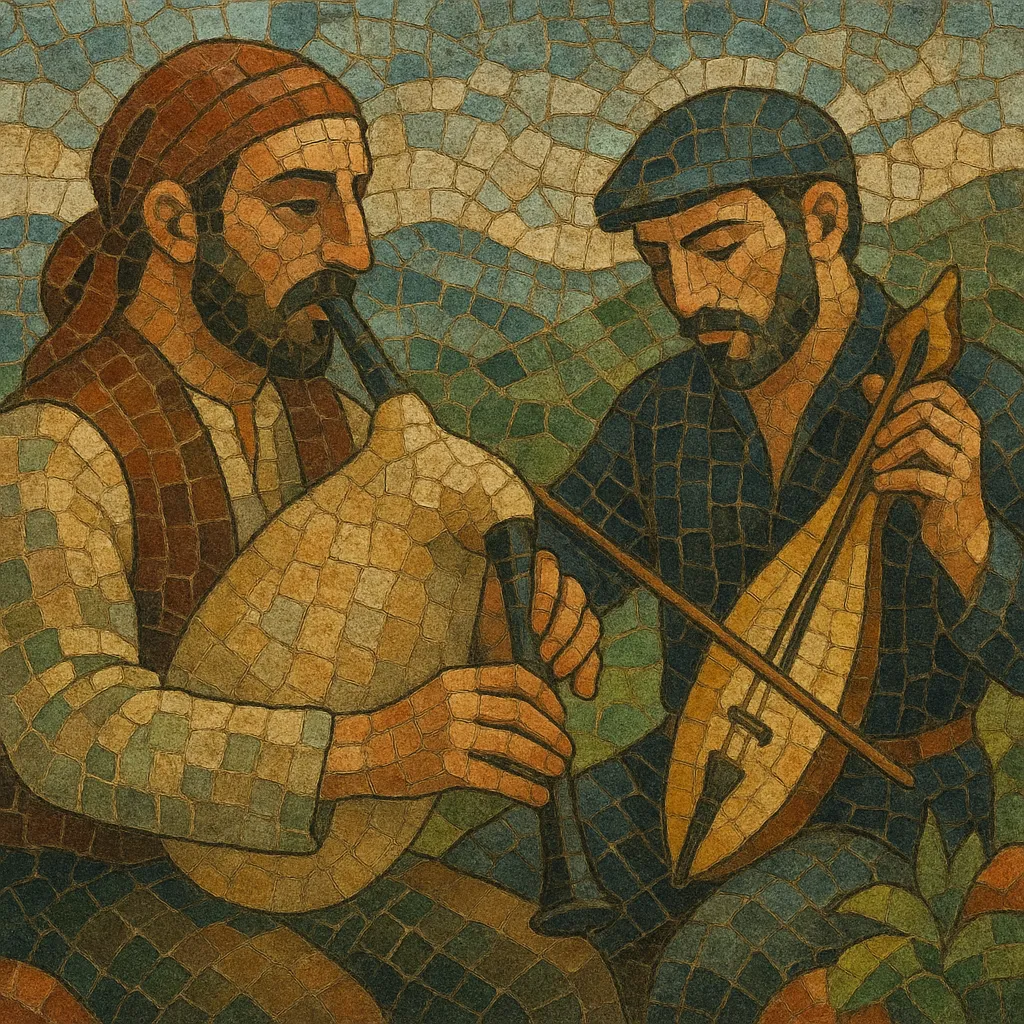Karadeniz folk is the regional folk music of Turkey’s eastern Black Sea (Karadeniz) coast, associated with Laz, Hemshin, Pontic Greek (Romeika-speaking), and Turkish communities.
It is typified by the piercing, agile sound of the kemençe (Pontic lyra) and the droning tulum (Black Sea bagpipe), propulsive asymmetric dance meters (especially the horon in 7/16), and call-and-response vocals. Melodies often draw on Anatolian/Turkic and wider maqam-based modal practices, while lyrics evoke seafaring, mountain life, migration, tea and hazelnut harvests, and fervent love.
In modern practice, traditional ensembles are frequently joined by guitar, bass, and drum set, producing a lively folk-rock crossover that retains the region’s characteristic rhythmic lift and ornamented melodic style.
Karadeniz folk formed along Turkey’s Black Sea coast (notably Rize, Trabzon, Giresun, and Artvin) through centuries of interaction among Laz, Hemshin, Pontic Greek (Romeika), and Turkish populations. The kemençe (Pontic lyra) emerged as an emblematic instrument for fast, tightly ornamented dance tunes, while the tulum (Black Sea bagpipe) supplied a continuous drone for communal dancing. Modal thinking related to the wider maqam world helped shape melodic contour and ornament.
By the 1800s, regionally distinct dance-song repertoires such as horon were entrenched in village festivities and coastal gatherings. With early recording and later Turkish Radio and Television (TRT) classification in the 20th century, Black Sea songs entered national circulation. Master kemençe players and local singers popularized forms like "kalkama" and various horon types, preserving dialectal and linguistic diversity (Turkish, Lazuri, Hemşince, and Romeika).
From the 1980s onward, artists such as Fuat Saka brought jazz, rock, and singer-songwriter sensibilities to regional material. In the 2000s, Kazım Koyuncu’s widely loved output catalyzed a new wave of Karadeniz folk-rock, inspiring bands (Marsis, İmera, Koliva) and soloists (Selçuk Balcı, Apolas Lermi) who fused electric rhythm sections with kemençe and tulum while maintaining asymmetric grooves and folk poetics.
Karadeniz folk thrives at regional festivals, weddings, and national stages, and in studio productions that balance heritage with contemporary sound. Ongoing efforts focus on language and repertoire preservation, revitalizing tulum and kemençe craftsmanship, and documenting local dance variants of horon.


